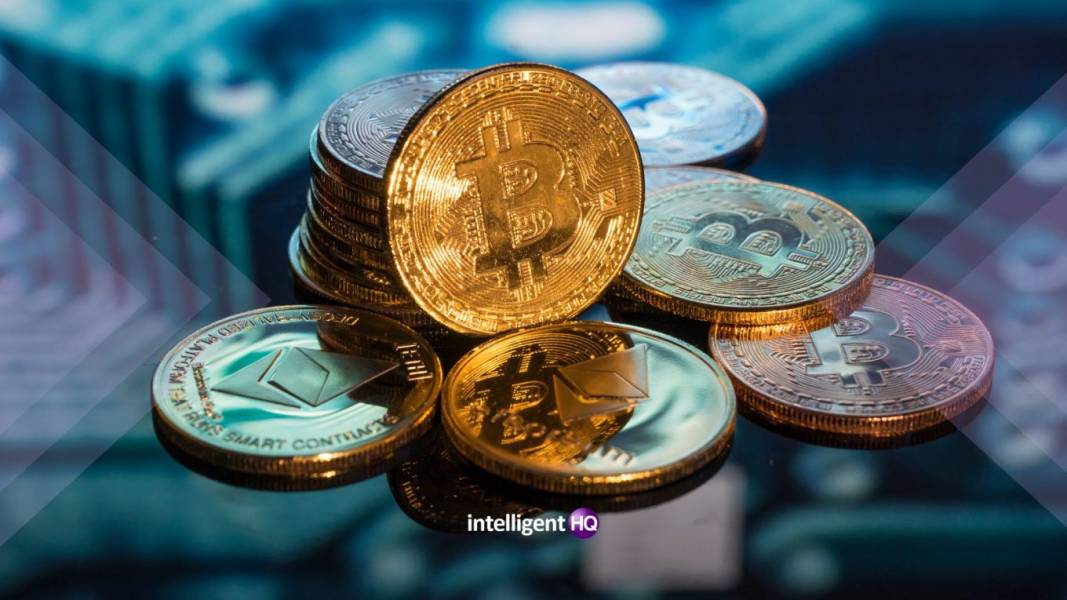Would you like to invest in cryptocurrency futures trading, but don’t know where to begin? Things like Bitcoin and Ethereum, to give a few examples, have leading market positions among digital assets. For this reason, many people use trading futures on these cryptos to bet on their future values.

Understanding Crypto Futures
Definition and Overview
Crypto futures are derivative contracts that enable traders to speculate on the price movements of cryptocurrencies like Bitcoin, Ethereum, and others. Different from spot transactions, which involve actual purchase and sale of digital assets, future contracts mean that a time-limited agreement must be reached: when it is specified in advance that at some future date and at a prearranged price assets will be transferred.
Futures trading focuses primarily on whether a contract is long (buy) or short (sell). Traders can take advantage of both rising and falling prices by choosing the right position.
For example, if you anticipated that the price of Bitcoin would rise, you could buy a futures contract on Bitcoin. On the other hand, if you expected the price to fall, you would sell and go short.
Advantages and Risks
Crypto futures trading offers many advantages over spot trading, including leverage, hedging opportunities, and the ability to speculate on price movements without owning the underlying assets. However, it’s also essential to understand the associated risks and approach futures trading with caution.
Advantages:
- Leverage: Futures contracts provide leverage, allowing traders to control a larger position with a smaller initial investment. This amplifies potential profits, but also increases potential losses.
- Hedging: Crypto futures can be used as a hedging tool for those holding spot positions. Traders take an opposite position in the futures market to offset potential losses from adverse price movements.
- Speculation: In theory, futures trading is therefore possible to speculate on price movements without holding the actual crypto currency products themselves, thus enabling exposure to the market without requirement for large capital.
- Diversification: With crypto futures markets, there are chances that non-correlated return assets can be included in an investment portfolio, thereby broadening market cycle coverage.
Risks:
- High Volatility: Cryptocurrency markets as we all know are prone to extreme volatility–which may further increase your futures trading losses when leverage is applied.
- Liquidation risk: If the market goes against your position, you may need tat i- margin call and potential liquidate the position, causing serious losses.
- Counterparty risk: Any futures contracts involve counterparty risk. This means that there is always a chance the other party will not fulfill their obligations.
- Complexity: Futures trading is inherently more complex than spot trading–it requires a good understanding of margin requirements, order types, and risk management strategies.
Crypto futures trading offers potential rewards, but it’s crucial to approach it with caution, proper education, and effective risk management.
Developing a Trading Strategy
Before stepping foot into the world of cryptocurrency futures market, one must have a well-defined trading system. This means embracing the principles of technical analysis, and learning about effective risk management in order to survive trading in cryptocurrency markets.
Technical Analysis Basics
Familiarity with technical analysis and forecast technology is key to charting success; decisions made from each turn must be heavily based on such data. Hype can provide us with workable techniques or ideas, but nothing at all is guaranteed. However, technical analysis gives a few useful ideas to effectively trade and make profits. According to Novax, here are some of the technical factors that influence crypto future trades:
- Chart patterns: Recognizing chart patterns like head and shoulders, double tops/bottoms, triangles, and flags can signal potential reversals or continuations in price movements.
- Trend analysis: By looking at the overall trend (upward, downward or sideways) using moving averages, trend lines and other indicators–you can align your trading activities with current market direction.
- Support and resistance levels: These are price levels where the market has shown significant buying or selling pressure. It helps you understand areas where the price may stall or reverse.
- Indicators: Technical indicators like the Relative Strength Index (RSI), Moving Average Convergence Divergence (MACD) and Bollinger Bands can give a trader additional insights into market momentum, trend strength, and whether or if the market is overbought or oversold.
Technical analysis is a powerful tool, but we must keep in mind that past performance does not guarantee future outcomes. It’s better to use technical analysis in conjunction with other tools (such as the mainstream consensus and basic analysis) to form a holistic trading strategy.
Risk Management Techniques
Given the inherent volatility and leverage in cryptocurrency futures trading, a sound risk management strategy is almost essential. Here are some fundamental risk management tips you can follow:
- Position size: Figure out an appropriate position size based on your risk tolerance and account size. A typical method is not to risk more than 1-2% of what used for trading each time that you go into action.
- Stop-loss orders: Set exit points ahead of time (stop-loss) to limit potential losses if the market moves against your position.
- Leverage management: leverage might multiply profits, but be careful how you use it. For example, never have your entire position at 100 times leverage and another part at 5 times just in case one goes wrong.
- Portfolio diversification: Diversify the risk of your trades by trading different kinds of cryptocurrencies and using different strategies to prevent concentration on one coin at any given time point in life or space. Risk / Reward ratio:
- Risk-to-Reward Ratio: Risks are worthwhile only when they are supported by potential rewards. Aim for trades which target a favorable risk-to-reward ratio, where the advantages of taking that particular course exceed any drawbacks you might suffer.
- Emotional control: Develop strategies to manage emotions like fear and greed.
Executing Trades
After you have developed a complete trading strategy, it’s now time for actually conducting trades in the crypto futures trading category. This section addresses such subjects as various order types, how to place an order, and definitions of what leverage and margin are.
Order Types and Placement
Crypto futures exchanges offer different order types to help traders effectively manage their positions. Users can execute trades according to their strategies. Here are some common order types:
- Market order: A market order is an instruction to buy or sell an index at the best available market price immediately. It achieves fast execution, but gets no price guarantee.
- Limit order: A limit order is an instruction to buy or sell futures contracts either at a stated price or better. This offers more control over the entry price point, along with the risk of not getting into whatever trade you want. If the market does not reach the limit price, your order won’t be filled.
- Stop-loss order: To limit potential losses, a stop-loss order is designed to automatically close a position when the price reaches a certain level.
- Take-profit order: On the other hand, take-profit orders close all profitable positions automatically as soon as the market advances to a set target. This way, traders are able to lock in gains without any worries.
- Trailing stop-loss: A trailing stop-loss is a moving (or dynamic) bottom loss. When your own side is right, it automatically adjusts itself. This way you can maximize possible profits and at the same time keep them within reasonable bounds.
Order placement is done through the trading platform provided by the crypto futures exchange. Most platforms offer advanced order entry features, charting tools, and real-time market data to help you make smart trading decisions.
Leverage and Margin Explained
Leverage is one of the most important features of futures trading. It allows you to trade with much more money than your initial investment, which is margin in futures terms.
For example, if the margin account at the futures exchanges supports 10:1 leverage, theoretically speaking one could start a position worth $10,000 with just $1,000. But this sort of leverage not only magnifies profits; it also magnifies potential losses. Therefore, successful trading demands good risk management.
Margin is the capital you need to open a leveraged position and keep it running. Exchanges usually set the margin requirements based on the specific digital currency as well as how big or small a position in futures contracts. Suppose that an adverse move in price threatens your investment. In this case you will get a margin call, which means that new money must be injected into your account if you want the trade to stay open. What happens if it isn’t? Your position gets closed automatically.
Final Words
Crypto futures trading offers exciting opportunities but also carries significant risks. By understanding the fundamentals, developing a solid strategy, and implementing effective risk management techniques, you can navigate this dynamic market with confidence. Remember, success in futures trading requires discipline, continuous learning, and a willingness to adapt to ever-changing market conditions. So, it’s better to start small, practice with a demo account, and gradually build your skills.

Founder Dinis Guarda
IntelligentHQ Your New Business Network.
IntelligentHQ is a Business network and an expert source for finance, capital markets and intelligence for thousands of global business professionals, startups, and companies.
We exist at the point of intersection between technology, social media, finance and innovation.
IntelligentHQ leverages innovation and scale of social digital technology, analytics, news, and distribution to create an unparalleled, full digital medium and social business networks spectrum.
IntelligentHQ is working hard, to become a trusted, and indispensable source of business news and analytics, within financial services and its associated supply chains and ecosystems































